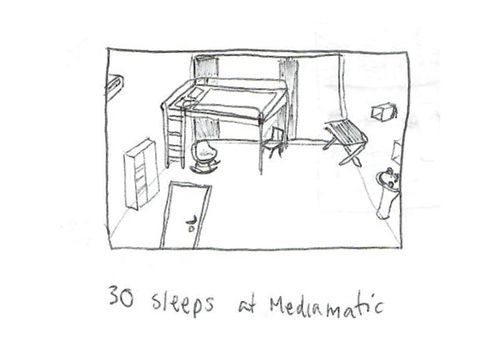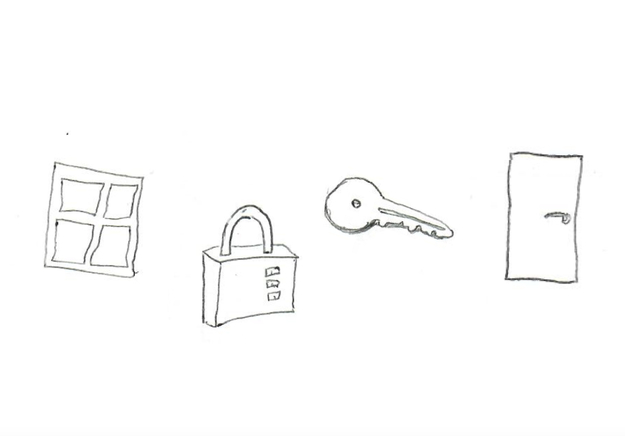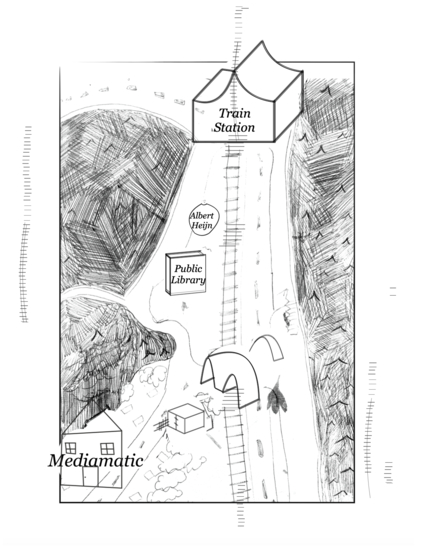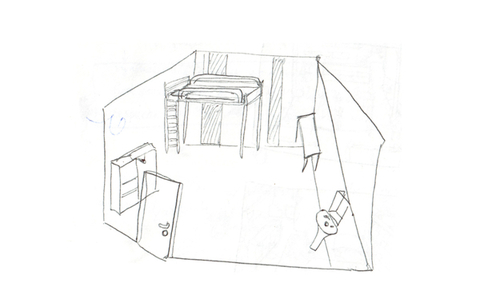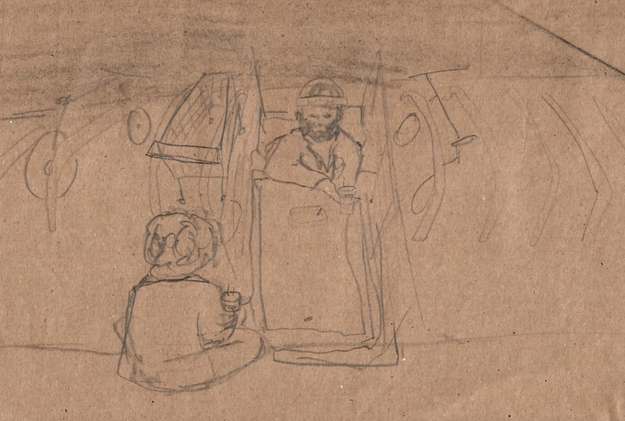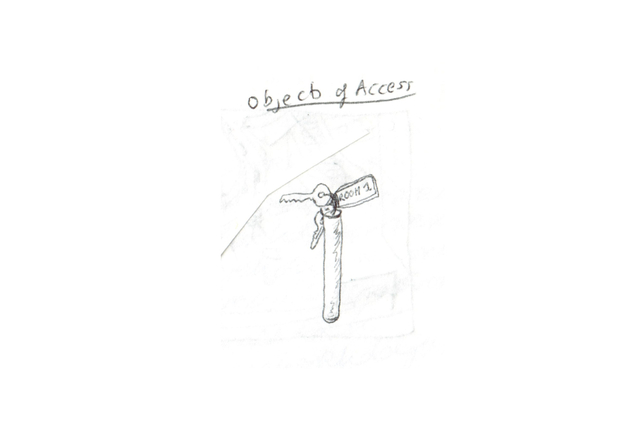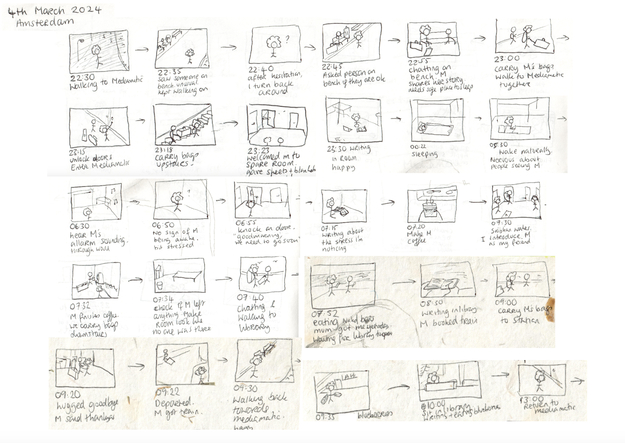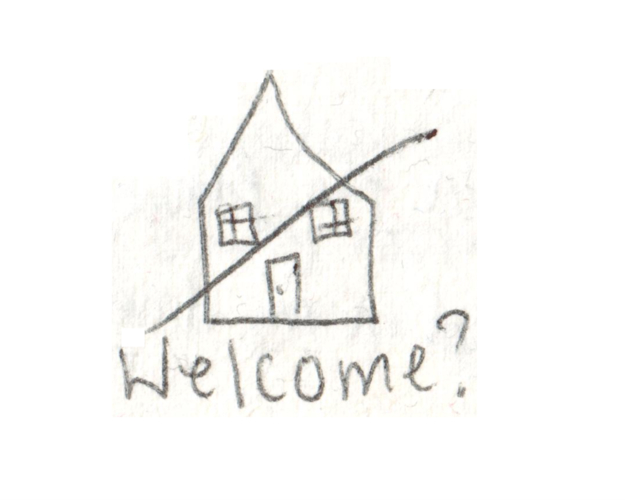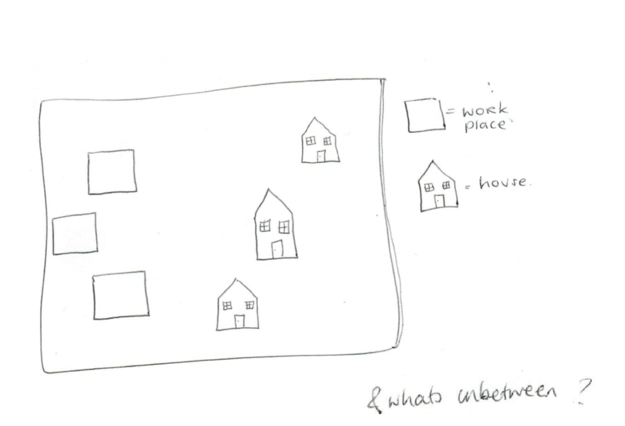Welcoming is a radical act. Whether we are welcoming friends, family, or even ourselves, true welcome relies on genuine trust, acceptance, and vulnerability.
When it comes to welcoming the unknown, a larger amount of vulnerability, willingness, and trust is required. In a world conditioned by fear and scarcity, the unknown is a dangerous entity. So we build our comfy bubbles, with our locks and walls, our rules and AirPods, doing our best to stay far away from those who don’t fit into our perceptions of familiar.
I'm Sophie, an explorer and researcher who for the past 30 days has been sleeping in the building of Mediamatic. I was invited here after a series of conflicts occurred between Mediamatic and some houseless neighbours in the area.
Mediamatic is located in the centre of Amsterdam. A cluster of buildings full of exhibitions, sitting quite beautifully next to the water of the canal. The buildings are made of glass and wood with bright posters and nice words printed all over them.
Plants, sculptures, tables, and chairs are dotted around. During the day, this space hums with activity. A soft space, a welcoming place.
Around 20:00 ish the day people have gone to their houses and Mediamatic stands empty of obvious life. The motion-detecting lights flicker on and off with the wind, and the sound of the trains continues until the early hours.
But of course, even with locked doors and darkness, life at Mediamatic continues.
mediamatic_drawings.pdf(mediaclass-landscape-large.1df3d6f438769113d26ed8577bc84d61afea2a7e) - 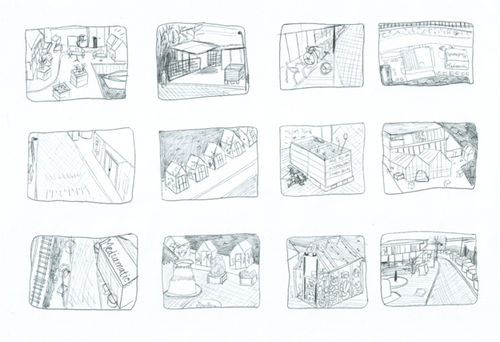
I sleep inside one of the locked buildings at night. I have a key to a private room, with a sink and a bed. The whole building is empty except for me. My head rests right next to a window with broken shutters. I watch the world outside each night as I fall asleep; often greeted with sounds of trains, loud bangs, shouts, and fights. Depending on the day of the week, I hear different levels of drunken chaos. I see the road, the gardens, the bushes, the canal, the bridge. All coated with street lights and shadows. Every few hours a police car drives along slowly patrolling the shady areas under the bridge. They’ve passed by me sometimes in the dark early mornings when I am sitting with S. The police never spoke to us, but their repeated presence gave me a sense of unease.
S is a houseless neighbour who lives nearby. I’d visit him, bringing tea and porridge sometimes, and we would talk. There was another guy in the area who liked to shout. And when I say shout I mean really shout. I never interacted with this person but I’d sometimes wake to his loud shrieks.
One day I was sitting talking with S. It was dark outside, either early morning or late night, I don't remember. The shouty man walked past us under the bridge; screaming his head off, sounding extremely threatening and out of control. His intensity accentuated by the echoes of the iridescently lit bridge. I felt initially threatened, I wondered whether I should run away. S was sitting on the floor in his nest, I was sitting on the floor opposite him. I looked at him for guidance; he could see I was scared. S held a calm and aware gaze and smiled at me with a sense of reassurance. His calm brought me calm. Shouty man walked on and went off echoing loud into the night. I asked S if he ever feels afraid of being outside. “Not often, but I do feel afraid of him”, gesturing in the direction of the shouty man. There were only two times I felt afraid during my time at Mediamatic, and this was one of them.
I’d often feel conflicted when saying goodbye to S. I had the keys to this big building, in which multiple rooms remain empty night after night. While I sleep inside in comfort, S sleeps out there, cold and exposed to Amsterdam’s winds. I did not feel comfortable to welcome S into the building. My intuition said no, or maybe it was fear. Either way, I didn’t do it, even when he directly asked me if he could have a shower. *Instead, I responded to his request by visiting a shelter in the area and asking if he could just use the shower. From what I understood, you can’t just access a shower, you have to go through all this bureaucratic registration stuff. I always wonder why there aren't public showers in cities. It seems like such a basic and achievable service, one everyone could utilise. I’ll talk more about this in a future blog post.
I did welcome others though, when it felt right. It was the 4th of March,around 22:30. I was just returning from my usual wander around the train station. A typical Monday night, quiet, people dotted around, walking quietly with their hoods and their headphones, avoiding eye contact. Benches line giant buildings along the canal. By day, they are occupied by people eating, resting, and watching. By night, they are usually deserted, except for the occasional group of sweet, intimidating people playing music loudly. But tonight was different. There on the bench lay a massive backpack, and a large duffel bag. In between the sizable bags sat a person; sitting still, looking out towards the water. I thought it bizarre they were there at this time. I wondered why. Is she houseless? Usually people find more discreet spots to sleep. This person sat right underneath bright street lights on a well populated street. I wondered if they were ok. The thought of approaching them immediately crossed my mind. I tried to ignore this inconvenient idea and continued walking. It was late and I didn’t want to make assumptions or annoy them. I told myself they are probably waiting for a train. For about 5 minutes I walked, debating my decision to ignore the mysterious person on the bench. Eventually I turned back to ask if they were ok. It was then that I met M.
M was a traveller in a difficult situation. As she was sharing her intricate and dramatic story, I was already seeing where this was going. Whilst listening, a little voice in my head was debating whether I would welcome her to one of the empty rooms. I could immediately tell she was kind, but I was wondering whether I trust her or not? M’s story was complex, and to be honest I was not so certain it was true, but that didn’t matter so much to me. What mattered was I could feel she was a kind person who needed help.
I have experienced being in situations like this myself, and the support and welcoming I have received from kind strangers has completely shifted the way I treat others in my everyday life. I like to think that genuine trust and kindness is quite contagious. M shared that she was planning to spend the night on the bench. She said she was scared and too nervous to sleep, worried about her belongings getting stolen. After she said this, It didn’t take long before we were walking towards Mediamatic together.
Usually, on my travels and journeys, I find myself being the one who is welcomed; whether into people's homes or people's cars when hitchhiking, I am quite familiar with the dynamic of trusting strangers. But rarely do I have the opportunity to welcome another in this way.
I trusted M, and my intuition felt it was right to invite her, but I was conflicted. Mediamatic isn’t my home either, and I was unsure it was okay for me to make this decision. I kept M’s visit discreet; making sure we left by 07:30 the next morning (long before the office working hours) and tidying the room after. I felt unwelcome to be welcoming M into mediamatic, so I kept it a secret (until right now).
The wish to welcome was stronger than the fear of imagined consequences, so instead of a potentially dangerous night spent on a bench in winter Amsterdam; M slept in a warm, safe bed that otherwise would have been empty.
Why did I so easily welcome M to the empty room and not S? Both M and S are technically houseless, but I knew M was travelling, meaning she only needed shelter for the night, and would soon be leaving Amsterdam. The temporary nature of the connection makes it easier to welcome someone. Gender also plays a factor in how safe I feel with someone; I feel more comfortable with a girl similar to my age than an older man. M’s character was also more familiar to me, and I related to her situation. This made it easier for me to trust her. Whereas S lives in Amsterdam, and wants to have a permanent residence, but due to a concoction of systemic failures he finds himself without access to one. The level of support S may want ( and need ) is beyond my capabilities but I choose to welcome him in the small ways I can; with conversation and tea.
It seems it’s easier for me to welcome people who don’t need that much help.
I suppose we find our own ways of how much welcome we grant to others. Shouty Man received little to no welcoming from me because I was afraid of him. Whereas with others who I am comfortable around, it can feel very natural connecting and trusting them.
Welcoming is not only expressed in human to human interaction; it’s embedded within the very nature of our environment. Spaces and objects send signs of inclusion or exclusion which influence how we see and experience the world. Warm lights and squishy chairs sing that we are welcome, while cold concrete and security cameras tell us to watch out.
In the city, we are expected to get our doses of welcome in our houses, workplaces and cafes. These spaces are often inaccessible, locked behind barriers of keys, qualifications or money. This structure expresses very little welcome to those living without a house. When you are denied access to these spaces of warmth and welcome, what are you to do? With this in mind, it becomes very clear of the importance of building greater compassion and inclusion into our communities.
Why can’t there be public spaces that feel like home?
In my life, I've come to see welcoming as a practice. A habit that requires conscious cultivation. Through embracing vulnerability and trusting our intuition, it’s possible to go beyond the limits of fear and uncertainty that often hinder acts of connection.
We each hold the power to effect change in our own worlds. Acts like listening and engaging with those around us can drastically transform our lives. We recognise that we are all just people, who get sleepy, and hungry, and who just want to be warm and loved. With small gestures of welcome, like offering our attention, a smile or a simple cup of tea, we become more connected, more aware, and together contribute to building a culture in which we are all welcome.
About the Artist
Sophie Conroy is an artist and embodied researcher. She uses her life as a tool to test different ways of living, creating conditions to explore the unknown and learn more about the world and the self. This includes her research on homeless people and being home/house-less. Ultimately, Sophie explores the question: what do we really need?
Visit her website at: https://sophieconroy.com/
